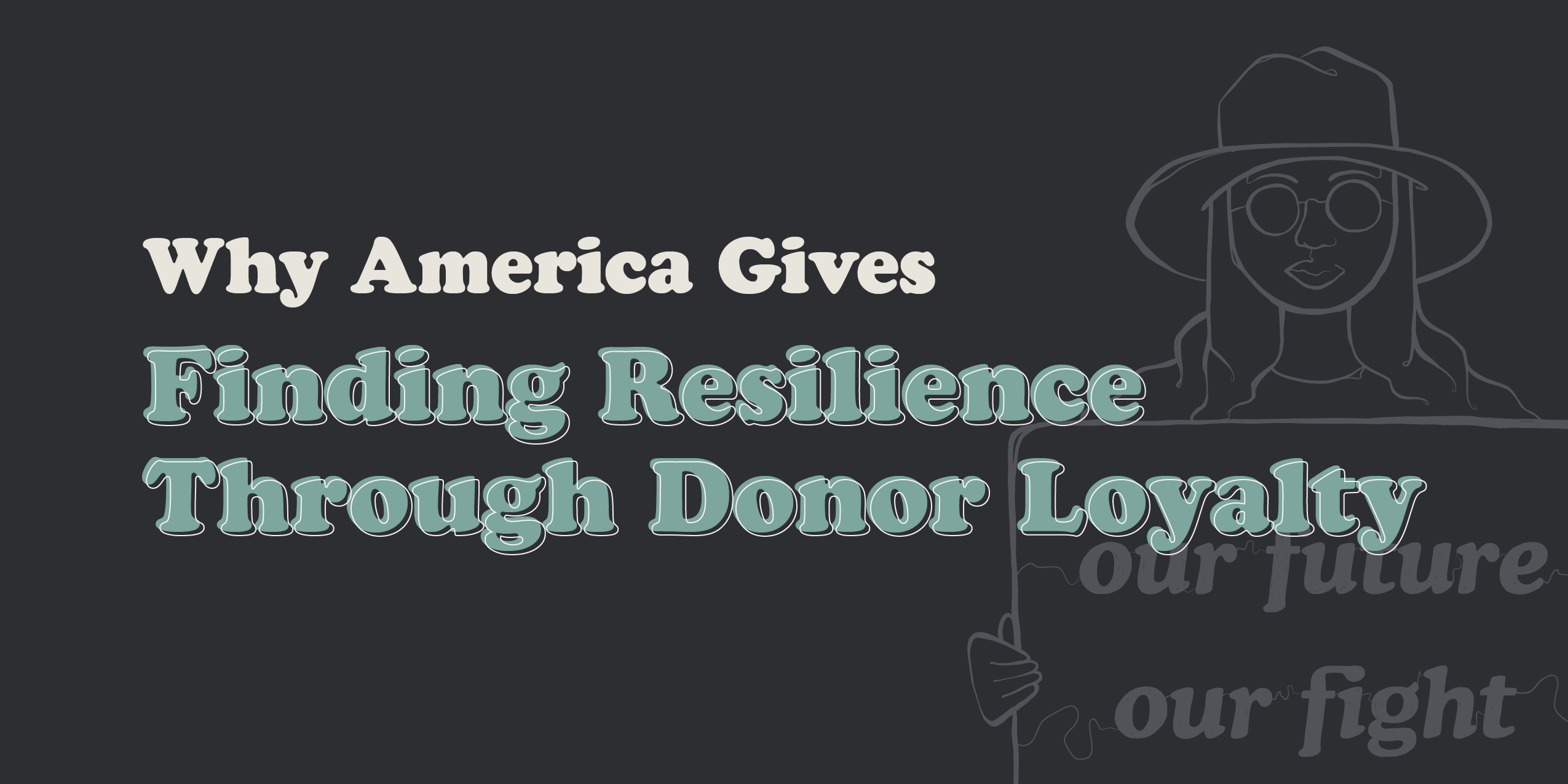How to Nail an Elevator Pitch for Nonprofits

When people begin working on their nonprofit elevator pitch, they often start by estimating how much time they may have with a listener. A frequently cited standard is 118 seconds—the length of an average elevator ride in New York City.
While your elevator speech may very well never take place in an actual elevator, you can use this model as a foundation to create a narrative that:
- Conveys your nonprofit mission statement
- Highlights your trusted processes as a data-driven nonprofit
- Increases your fundraising success
- Encourages listeners to take action
- Attracts nonprofit board members and corporate sponsorships
Whether it’s a preplanned pitch to someone you expect to meet or an out-of-the-blue conversation like one an entrepreneur might have, you must be ready to make your pitch at a moment’s notice. And you’ve only got a small window of time to get your point across.
Importance of a Nonprofit Elevator Pitch
Crafting the perfect elevator pitch allows you to make a lasting impression at any networking event and increase donations, engagement, interest, and much more. With a short elevator pitch, use your nonprofit storytelling skills to summarize the significant impact of your organization.
In the following video, we’ll outline what to avoid in your nonprofit elevator pitch. Then, continue reading to learn which elements you need to create a successful one.
How long should a nonprofit pitch be?
Generally, a great elevator pitch should stay under 60 seconds. You want to get your biggest points across with a clear call to action to start the conversation. From there, follow up with additional details that add context. A clear focus will benefit you as you get writing.
Next, we’ll talk about how to break down your pitch into specific portions that make it the most impactful 60 seconds possible.
The Structure of Your Pitch
When writing an elevator pitch that will resonate with your audience and successfully communicate your organization’s mission and goals, it’s essential to consider your pitch’s format.
One way to optimize your pitch is by breaking it into three sections: the hook, the body, and the wrap-up. Then, bring all the content to life with a strong delivery. Below, we’ll walk you through timing estimates for each section and tips to get the ball rolling.
The Hook
Ideally, your hook should be no longer than 10 seconds. You need to grab that person’s attention, so don’t waste time with small talk.
As a basic template, deliver a solid introduction stating who you are, what you do, and how your nonprofit organization makes an impact. But strike a balance that doesn’t overload your listener with information to remain compelling.
Next, develop a succinct description of your organization, or maybe a couple that you can use in different situations. For example, you might experiment by leading with a shocking statistic about your impact.
You can also turn to your mission statement to develop an attention-grabbing hook. Take the full statement, isolate the main ideas, and refine it for general conversation. It could look like this:
“We seek to empower Tallahassee’s low-income families by offering financial services and education programs to help them achieve homeownership and economic stability.”
Now, isolate the main ideas:
“We offer financial services and education programs” and “We help people achieve homeownership and economic stability.”
Finally, refine it for casual conversation:
“We help low-income families become more financially stable with free classes and professional advice.”
In one sentence, we know who you serve, how you help, and what impact you make.
The Body
Following the hook comes the meat of your pitch, which should only take about 30 seconds. At this phase, describe the specific social impact you bring to the communities you serve. You’ve mentioned your value in the hook, so now it’s time to prove it.
As an exercise to prepare the body template of your pitch, ask and answer questions like:
- What differentiates your nonprofit from others in the same space?
- How effective are your current programs?
- Do you have a compelling story?
- What’s your approach to nonprofit marketing?
- How can a prospective donor get involved right now?
- What do you plan to accomplish in the near and distant future?
The body of your pitch isn’t meant to send a “we do this” message. It’s intended to communicate, “this is what we do for the people we serve, and this is how you can be a part of that crucial work.”
The Wrap-Up
To wrap it all up, you only need 20 seconds. Bring everything home with a very specific ask. Knowing the direction of your nonprofit elevator pitch before you write it is a good strategy.
So take the time to think about what outcome you want from your encounter. For example, do you want someone to:
- Match donations for your next campaign?
- Sign up for peer-to-peer fundraising?
- Make an in-kind donation?
- Join your board of directors?
- Share your campaign on their social channels?
Regardless of what your ask is, it can shape your entire pitch. It may even reveal that you need multiple pitches depending on your audience.
The Delivery
Hollywood actresses don’t just show up on set and nail their lines on the first take. They rehearse, rehearse, and then rehearse some more.
Similarly, you need to know your elevator pitch deeply and intimately. Your delivery is critical. People need to hear, see, and feel your emotional connection to your work. Without that, they may not care about what you say.
When it’s time to rehearse your elevator pitch, start by printing it out and reading it aloud to yourself. Pay attention to things like:
- Sentences you stumble over
- Fluffy, long-winded language
- Wording that lacks clarity
- Lines that you can condense
- Words you hate saying
Then, when you’re pleased with the content, stand in front of the mirror and practice reciting your pitch with your entire body. Pepper in smiles, practice making eye contact with yourself, and get your hands moving.
As a final elevator pitch tip: Remember that if you can say something in five words, you should say it in five words. Short and simple often trumps long and complex.
Elevator pitches are an invitation to be a part of your nonprofit organization, not just a solicitation. Use it to explain what you do, why it’s necessary, and how someone’s involvement is an opportunity to be part of a larger vision.
You can always update your fundraising pitch after field-testing it a few times. The point is that your pitch can and should continually adapt as you test, revise, and field test again. After some practice, you’ll pitch like a pro.
Additional Nonprofit Elevator Pitch Tips to Try Out
Provide Examples
It’s crucial that you answer all the who, what, where, when, and why questions. Assume that your listener is unfamiliar with your cause. Then, draw a connection to your audience, providing specific examples or sharing success stories to relate to your listeners better. However, ensure not to include too many examples.
Give Out a Business Card
After presenting your elevator pitch, it’s key that your audience has the information it needs to remain in touch. Have business cards on hand that list your contact information and a donation site to help them to find you. That way, if a potential donor wants to know more about your cause or make a gift, they can easily connect. And if you want to add a touch of personalization, consider including your personal mission statement on your business card.
Don’t Use Jargon
Your message is just as critical as how you deliver your message. Keep your pitch simple and precise and don’t be afraid to keep it casual. This can help build human connection and keep your listeners engaged.
Keep It Classy
With your elevator pitch buttoned up and ready to present, it won’t be long before you can establish new connections with inspired donors and partners. Ensuring you can effectively manage these new relationships will be essential to your nonprofit’s long-term success.
For all things online fundraising and donor management, lean on Classy. Our online giving platform streamlines the entire fundraising process to help you more easily build awareness for your cause and unlock the generosity of your supporters worldwide.

Tailor Your Pitch to Secure Donor Loyalty



